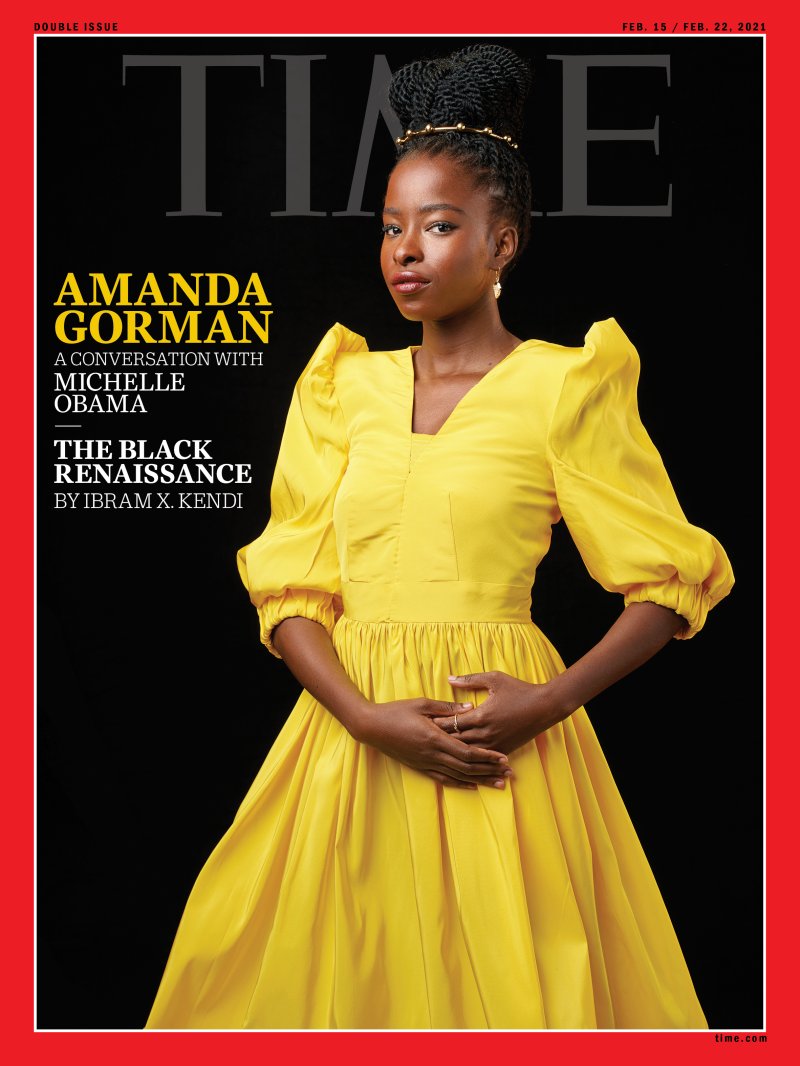Amanda Gorman’s eloquent poetry at Joe Biden’s presidential Inauguration soothed many Americans still reeling just two weeks after pro-Trump supporters staged an insurrection at the Capitol.
“We will rebuild, reconcile and recover
and every known nook of our nation
and every corner called our country,
our people diverse and beautiful will emerge,
battered and beautiful.”
This week, Gorman—the youngest Inaugural poet in U.S. history—is featured on TIME’s cover, where the 22-year-old wears a bright yellow familiar from January’s event.

Conceptual artist Awol Erizku captured Gorman for TIME in what he hoped would be a “very timely arrival portrait.”
“I was interested in allowing her to own the space that she’s in right now,” Erizku says. “We were going for timelessness, something that felt classical” and tied in to the “resurgence of a Black renaissance.”
It was a special moment for him, too. “Like many who witnessed the recent presidential Inauguration, I was captivated by her poem and her exquisite delivery,” says Erizku, who is based in Los Angeles and has exhibited at institutions including New York City’s Museum of Modern Art and the Studio Museum in Harlem. “For TIME, I wanted to extricate her from the political dimension and immerse it in a more cosmic atmosphere to add to the weight of her words.”

In a separate image featured inside the magazine, Gorman holds a white birdcage in a nod to the birdcage ring she wore on inauguration day. (That ring was a gift from Oprah, referring to previous inauguration poet Maya Angelou’s poem, “I Know Why the Caged Bird Sings.”)
“It needed a layer of depth that only poetry can explain,” Erizku says of the image.
A team of Black creative professionals prepared Gorman for the portraits: Jason Bolden styled her, Autumn Moultrie did her makeup, Khiry provided jewelry and the dress was from Greta Constantine.

The magazine package also features typography from Tré Seals, the founder of Vocal Type foundry, who specializes in making type inspired by communities of color and social justice movements. “When a singular perspective dominates an industry, regardless of any advancements in technology, there can be (and has been) only one way of thinking, teaching and creating,” Seals says. His bold, declarative typography, in a font called Neue Black, opens the package with its defining statement: “THE RENAISSANCE IS BLACK.”
- How Donald Trump Won
- The Best Inventions of 2024
- Why Sleep Is the Key to Living Longer
- Robert Zemeckis Just Wants to Move You
- How to Break 8 Toxic Communication Habits
- Nicola Coughlan Bet on Herself—And Won
- Why Vinegar Is So Good for You
- Meet TIME's Newest Class of Next Generation Leaders